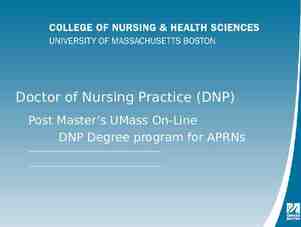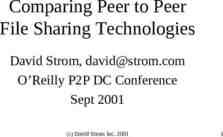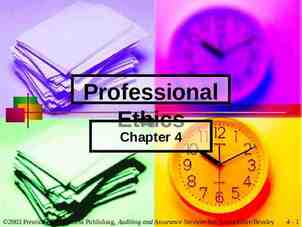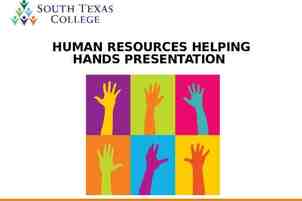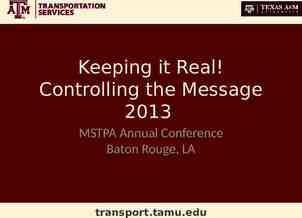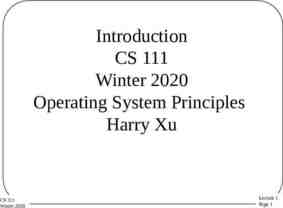Trauma Integrated Treatment Sonia Fry MA LCPC QP
32 Slides2.41 MB

Trauma Integrated Treatment Sonia Fry MA LCPC QP

My name is Sonia Fry. I’m a Trauma Resolution Therapist. I have been working in the field of mental health and substance use disorders in some compacity for 30 years. I have specialized in trauma for 15 years. I became a Master ART Clinician in 2019. I’m currently the Clinical Director at Preferred Child and Family Services in Twin Falls, Idaho. We also have a satellite office in Burley. I have been member of the Fifth District Mental Health Court Team for 10 years. Our Judge is Judge Calvin Campbell. We appreciate him and his dedication to the MHC program.

We are in The Fifth District. Preferred is the Substance Use Treatment provider for The Fifth District Mental Health Court (TF) The Fifth District DUI court (TF) The Fifth District Drug Court (Burley) The Fifth District Juvenile Drug Court (Burley) Since 2019 Trauma Resolution Therapy has been a key part of the SUD program at Preferred.

At Preferred we have 5 clinicians trained in Accelerated Trauma Resolution Therapy. In the last 2-3 years The Crisis Center in Twin Falls (Kim Dopson) has facilitated trainings for 25 clinicians in our area to be trained in Accelerated Resolution Therapy. Trauma Integrated Treatment is becoming more available to people in our area.

What is Trauma? Trauma is the end result of events or experiences that leave us feeling deeply unsafe and often helpless. It can result from a single event or be part of an ongoing experiences.

Acute results from a single incident There are Three Types of Trauma Chronic is repeated and prolonged such as domestic violence or abuse. Complex is exposure to varied and multiple traumatic events, often of an invasive, interpersonal nature.

Bessel Van Der Kolk, MD Author of the Body Keeps the Score “We have have learned that trauma is not just an event that took place sometime in the past; it is also the imprint left by that experience on mind, brain, and body. This imprint has ongoing consequences for how the human organism manages to survive in the present. Trauma results in a fundamental reorganization of the way mind and brain manage perceptions. It changes not only how we think and what we think about, but also our very capacity to think.”

Pete Levine Author of Waking the Tiger “Trauma happens when any experience stuns us like a bolt out of the blue; it overwhelms us, leaving us altered and disconnected” ― Peter A. Levine, Trauma Through a Child's Eyes: Awakening the Ordinary Miracle of Healing

A 10-question questionnaire about adverse childhood experiences was mailed out 13,494 adults. Seven categories of adverse childhood experiences were studied: a) Psychological b) Physical c) Sexual abuse d) Violence against mother e) Living with substance abuse f) Living with Mental ill g) Parent in prison https://www.ajpmonline.org/article/S0749-3797(98)00017-8/fulltext CDC-Kaiser ACE Study details

The CDC’s Adverse Childhood Experiences Study (ACE Study) uncovered a surprising link between Trauma experienced as a Child and Many of the chronic diseases and mental illness people face today. ACE Study More than half of the 17,000 People in the ACE study had an ACE score of at least 1 and 87% of those who had 1 had more than 1. The CDC found that people who reported 4 or more had increased health risks for alcoholism, drug abuse, depression and suicide.

“Trauma is the invisible force that shapes our lives. It shapes the way we live; it shapes the way we love and the way we make sense of the world. It is the root of our deepest wounds.” “Trauma is not what happens to you, Trauma is what happens inside you, as a result of what happens to you.” Gabor Mate The Wisdom of Trauma

Accelerated Resolution Therapy LANEY ROSENZSWEIG FOUNDER

The premise of Accelerated Resolution Therapy (ART) The premise of ART is that effective resolution of psychological distress does not necessarily require an extensive amount of work or time. Many trained ART therapist report a rapid rate of recovery from trauma and other mental health problems. ART therapist guide clients through the process in a directive way, empowering them to take control over the content of the changes they choose to make in order to uniquely resolve their problems. (pg.3) ART training Manual Laney Rosenzweig (2017)

ART utilizes therapeutic eye movements Therapeutic eye movement can be found within Ancient Ayurvedic Medicine practices. They are becoming more recognized and credible and respected in our western culture. Examples are Eye Movement Desensitization Reprocessing (EMDR) and Neuro Linguistic Programming (NLP).

ART utilizes therapeutic eye movements ART takes a more directive approach. The ART clinician directs each step, integrating eye movements into known and trusted therapeutic interventions. One such intervention is Voluntary Image Replacement allowing the client to achieve emotional relief and cognitive resolution in a very creative way, using their own positive images.

Is beneficial is many ways: Accelerated Resolution Therapy A. Proven Effective B. Brief Therapy 1-2 sessions C. People don’t need to verbalize or write about details of the traumatic experience. D. Reduces Compassion Fatigue

Evidenced Based There are many research studies on the Accelerated Resolution Therapy(ART) website, but the most recent study was presented in the Annual ART conference. The University of South Florida examined the effectiveness of Accelerated Resolution Therapy in Treating PTSD and Other Mental Health Symptoms in Military Adults with a History of Suicidal Ideation.

Data from 2 studies on ART with Veterans and Military Service Members were merged (N 249) to compare health outcomes in those with and without a prior history of suicide Ideation(SI). It is important to note that no subjects expressed active (SI) when ART treatment commenced, although one group (the test group) did have a history of SI. 1-5 Sessions of ART were administered to study participants during the original research studies. Methods

Data was collected from participants using effective measurement tools that have been proven in previous practice and thus are considered to be “standardized” Data was collected from participants at Three different time points: Before ART therapy treatment began At the end of the final ART treatment (1-5 sessions) 3-6 months post-ART treatment Data Collection

Results: End of Treatment Both Veterans and Active Service Military Service members with and without a history of suicidal ideation, experienced substantial clinical meaningful improvements in symptoms of PTSD and other mental health issues.

Improvements in symptoms of PTSD and other mental health issues for both Veterans and Active Military Service Members, with and without a history of suicidal ideation, were maintained over time as exemplified by 6-months follow-up testing Results: 3-6 Months After Treatment

Main Finding Accelerated Resolution Therapy (ART) is a viable therapy option for Veterans and Active-Duty Military personnel who have previously expressed suicidal ideation and are currently suffering from symptoms of PTSD.

Although additional replication of results is needed, preliminary results indicate ART should be considered as a treatment option of the military community, particularly in those at high risk of suicide. Authors: Jessica Berumen, MPH CPH Tiantian Pang, MPH CPH Kevin Kip, PhD., FAAAS, FAHA University of South Florida

Accelerated Resolution Therapy Is beneficial is many ways: A. Proven Effective C. People don’t need to verbalize or write about details of the traumatic experience. B. Brief Therapy 1-2 sessions D. Reduces Compassion Fatigue

ART often resolves a client’s issues concluding treatment in 1-5 sessions. The Study at the University of South Florida showed an average of 3-4 sessions to conclude treatment. It is often 1 session per problem that the client wishes to address. Brief

No Need for Details An ART session can be completed without knowing details of the problem. Clinicians have completed successful sessions with clients without ever knowing what the problem was because the ART therapeutic process can be completed without the client giving details of the trauma; if this is what the client prefers. (Rosenzweig 2017 pg 13).

Reduces Compassion Fatigue Using conventional trauma therapies Trauma Resolution therapists listen to and absorb client’s stories, this can cause an accumulation of stress that may carry over into the therapist’s work and quality of life, causing “burnout”. After many years of treating people with PTSD many clinicians report experiencing vicarious trauma or compassion fatigue. ART trained therapists find a renewed sense of accomplishment and joy in trauma cases due to the success of helping someone find relief from the binds of their trauma.

Case Studies

In closing, I would like to thank Scott Ronan, Ileen Gerstenberger & Ryan Porter for this opportunity to talk about trauma and Accelerated Resolution Therapy. It is wonderful to see how support of treatment courts has grown over the years. Treatment courts are effective, beneficial and lifesaving. If you don’t have trauma trained treatment provider, I encourage you to move in that direction. Support a willing Clinician to attend a training. Trauma changes the way the brain works. Helping people heal from trauma helps them find themselves, find happiness, and rediscover joy in this human experience. There is no greater gift.

Websites for more information Accelerated Resolution Therapy Acceleratedresolutiontherap y. com IS-ART.org



